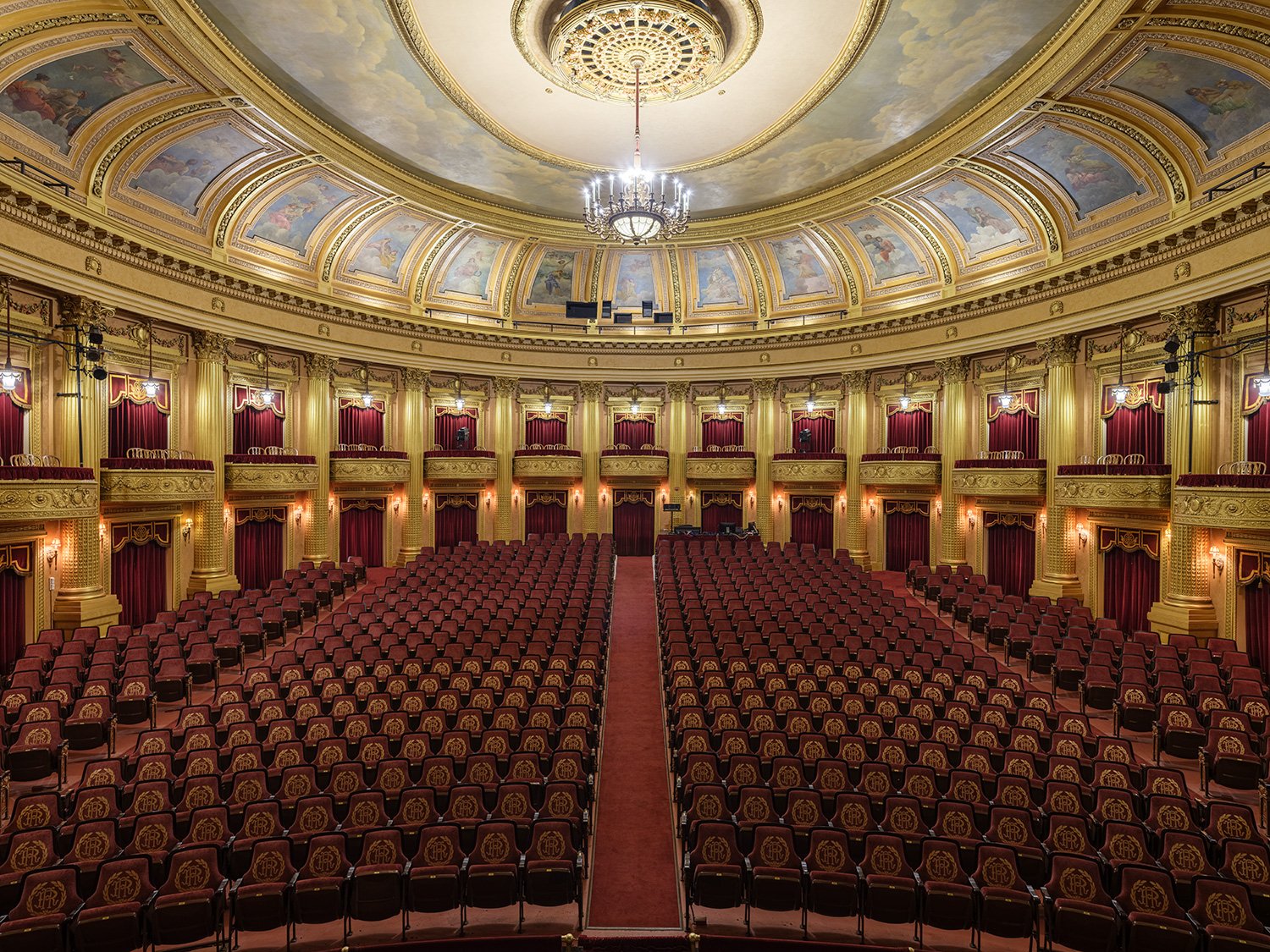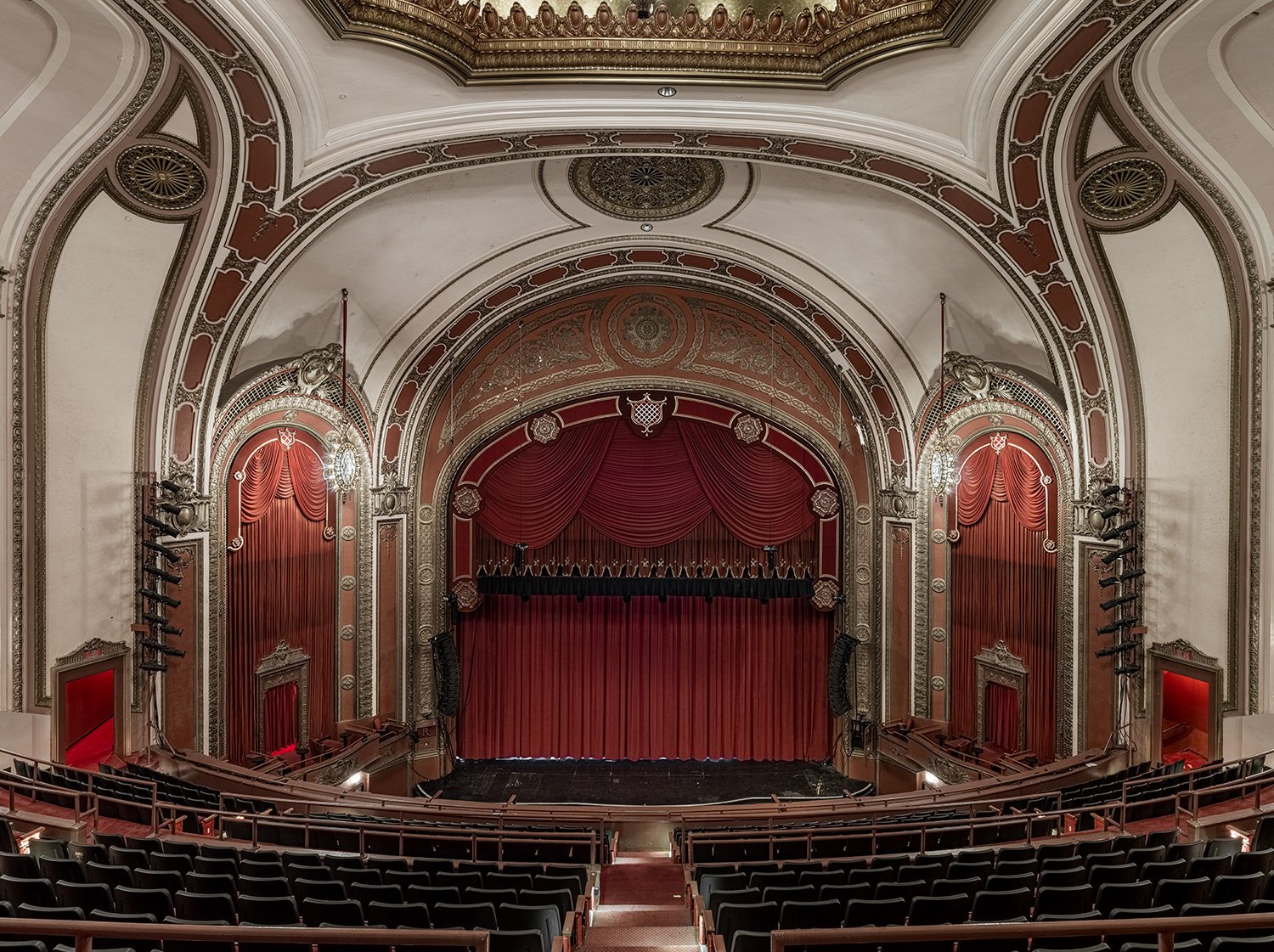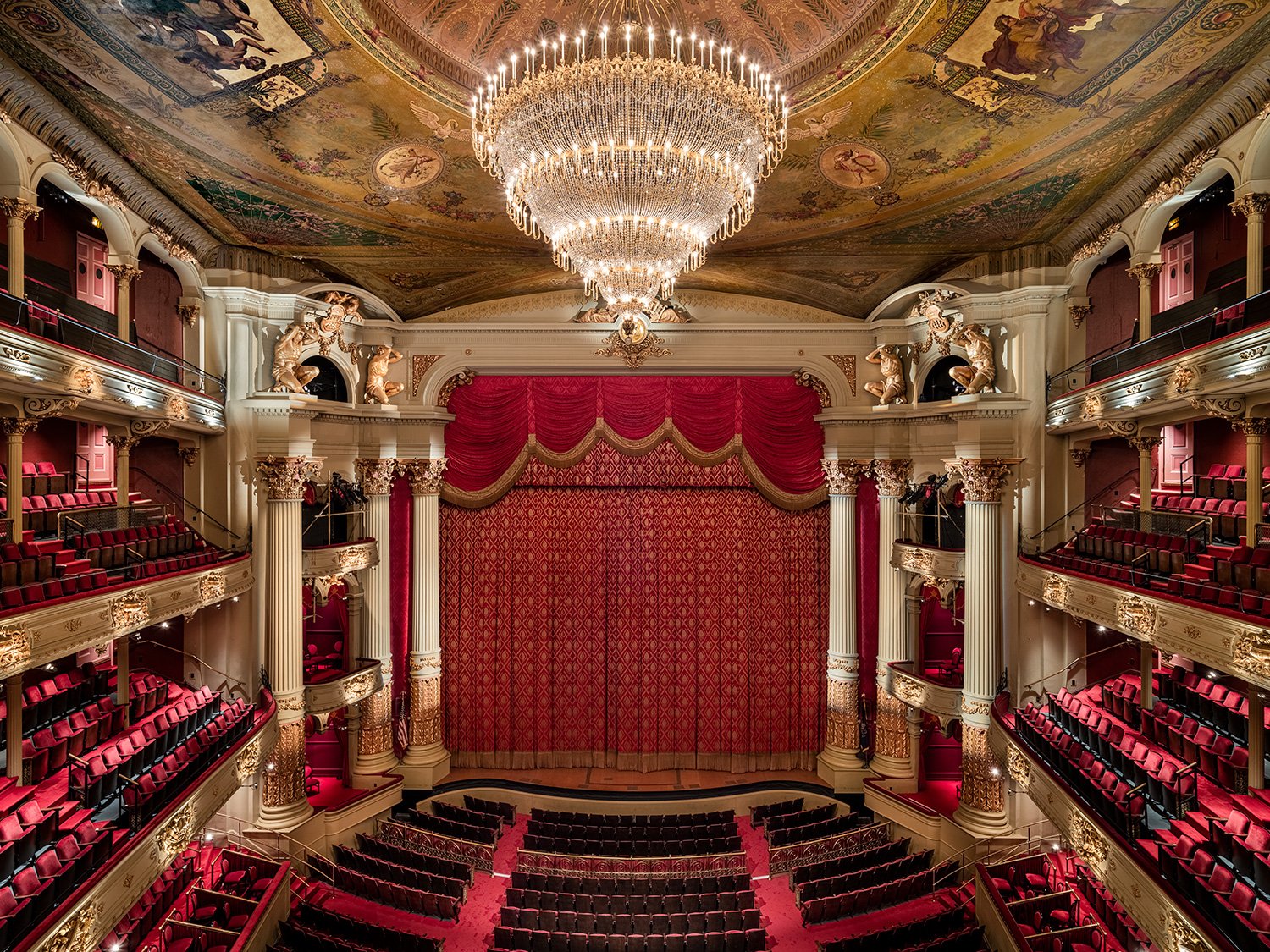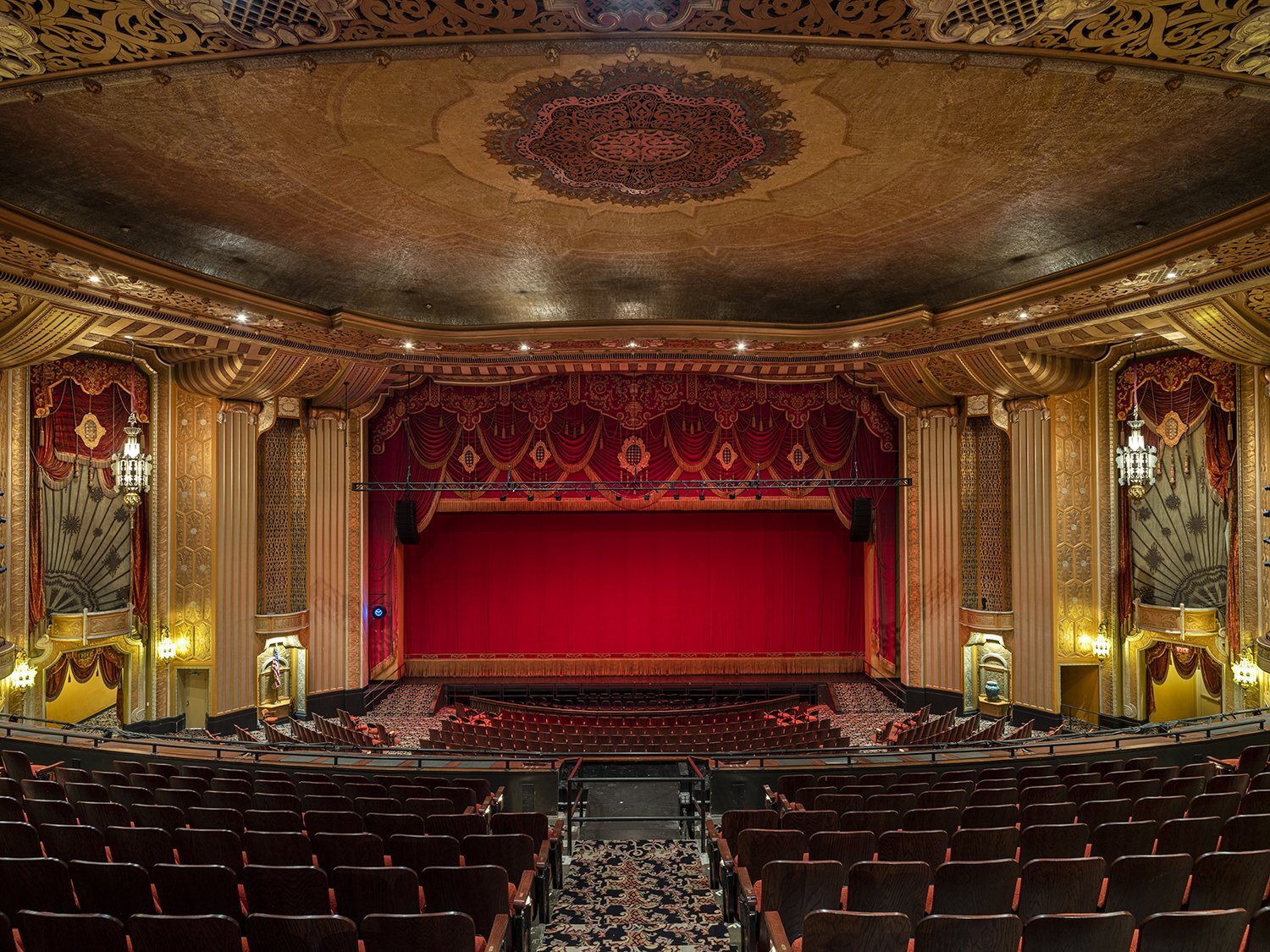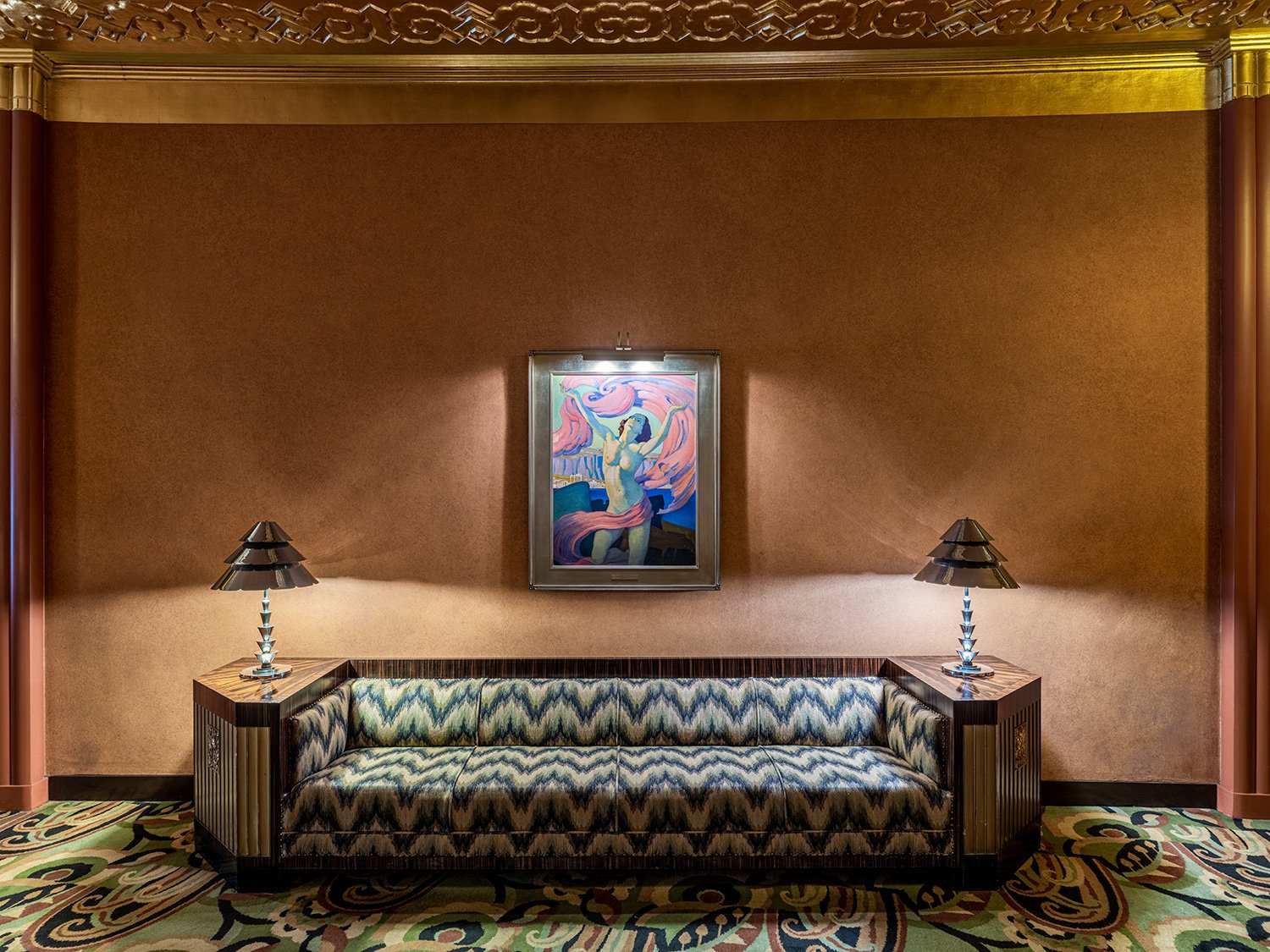Please Domes: Architecture of Gilded Dreams
The early 20th-century ushered in an audaciously romantic American gem: the picture-palace. As "movie magic" permeated the public's sensibility, pleasure domes of unrivaled artifice and euphoric pageantry swiftly sprouted up across the nation. Architect-designers embodied splendor of ancient temples, Renaissance palaces, and European opera houses, sparing no expense in revival treatments of Gothic, Baroque, Rococo, Neoclassical, Art Nouveau, and Art Deco. Intersections of architecture and ornamentation set foundations for built environments, ultimately galvanizing picture-palaces into cultural nexuses. For a few cents visitors were transported into enchanting “playhouses” of exotic cultures—cinema's glamour revamped the significance of theatres as treasured gathering places.






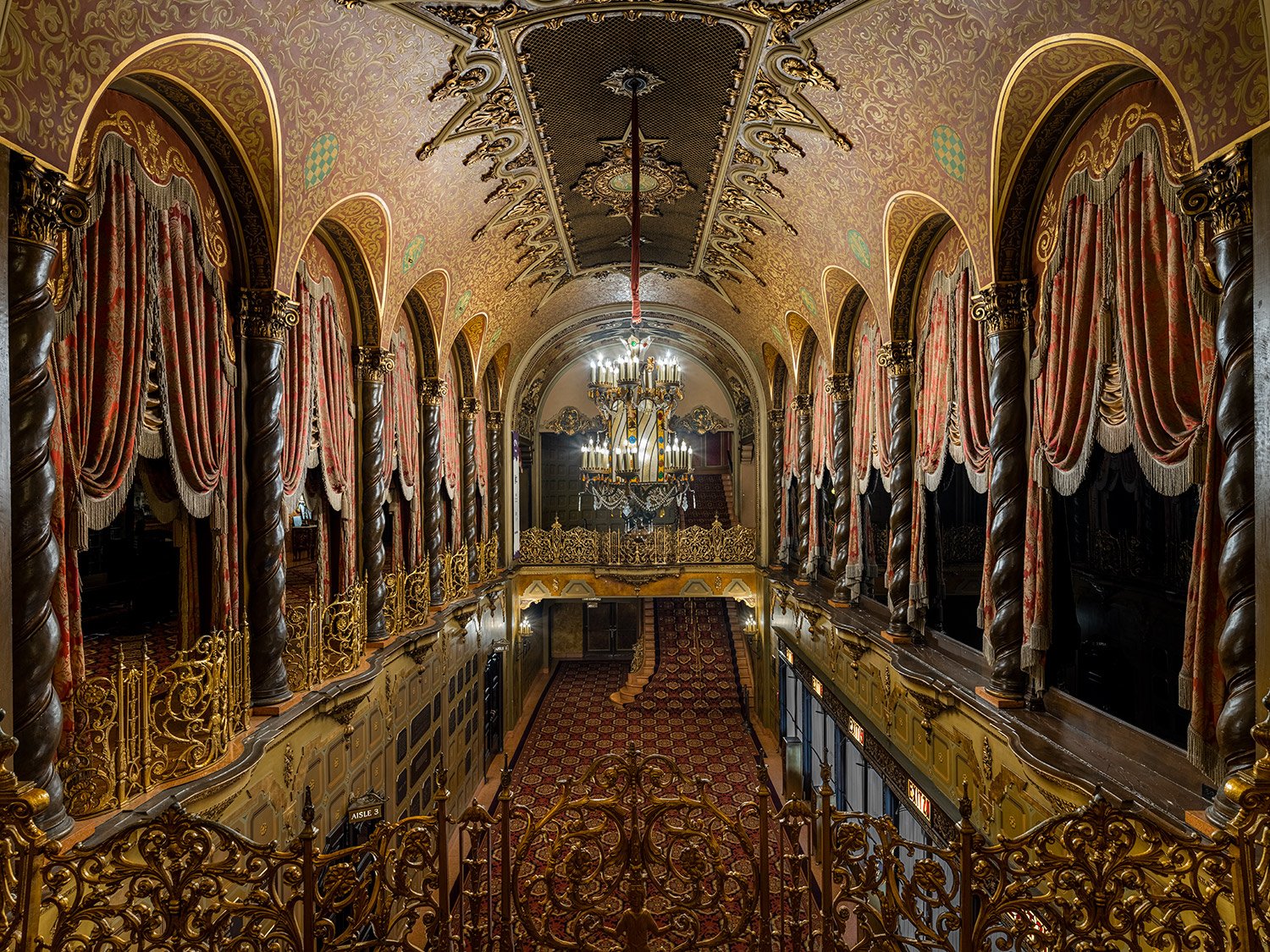



I am captivated by the monumental grandeur before me; spaciousness, symmetry, and precise sight lines immerse me. Each interior's architectural proportions and eclectic ornamentation reveals the competitive edge palace designers sought to mesmerize patrons. Despite their geographic separation, each theatre represents an orchestration of distinct disciplines into singular harmonies. Stripped of customary visitors and photographed using ambient lighting, a typology of diverse decorative expression takes form—allegorical motifs, silky damask, gilded surfaces, elaborate staircases, and intricate carving befitting majesty and spectacle. In spaces where fiction is divided from reality by the veil of a proscenium, a firm quietude surrounds me within these historic bedecked walls, reflecting back the souls of magnificent places. Time seems to have paused here as past resonates deeply into present.

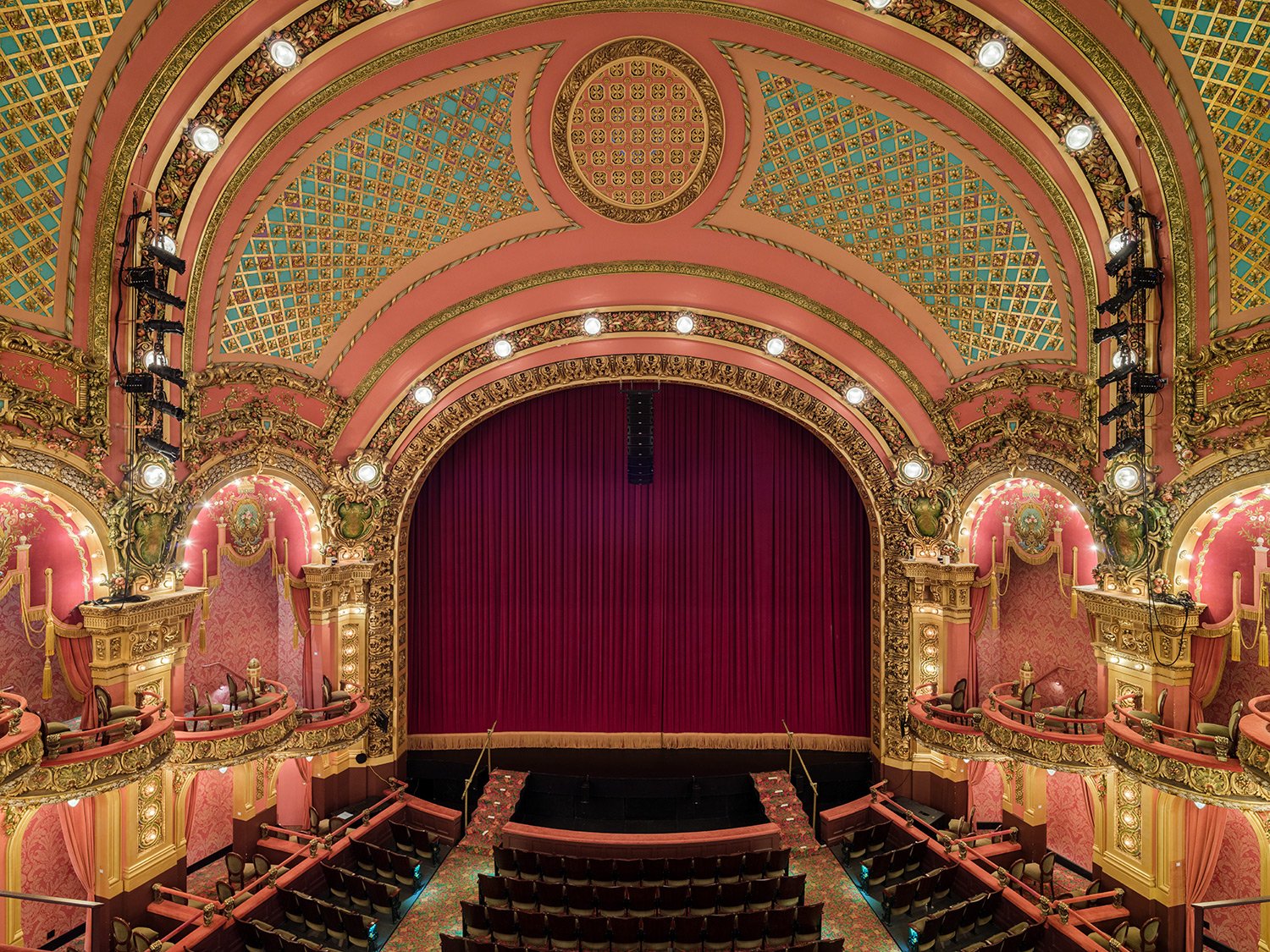




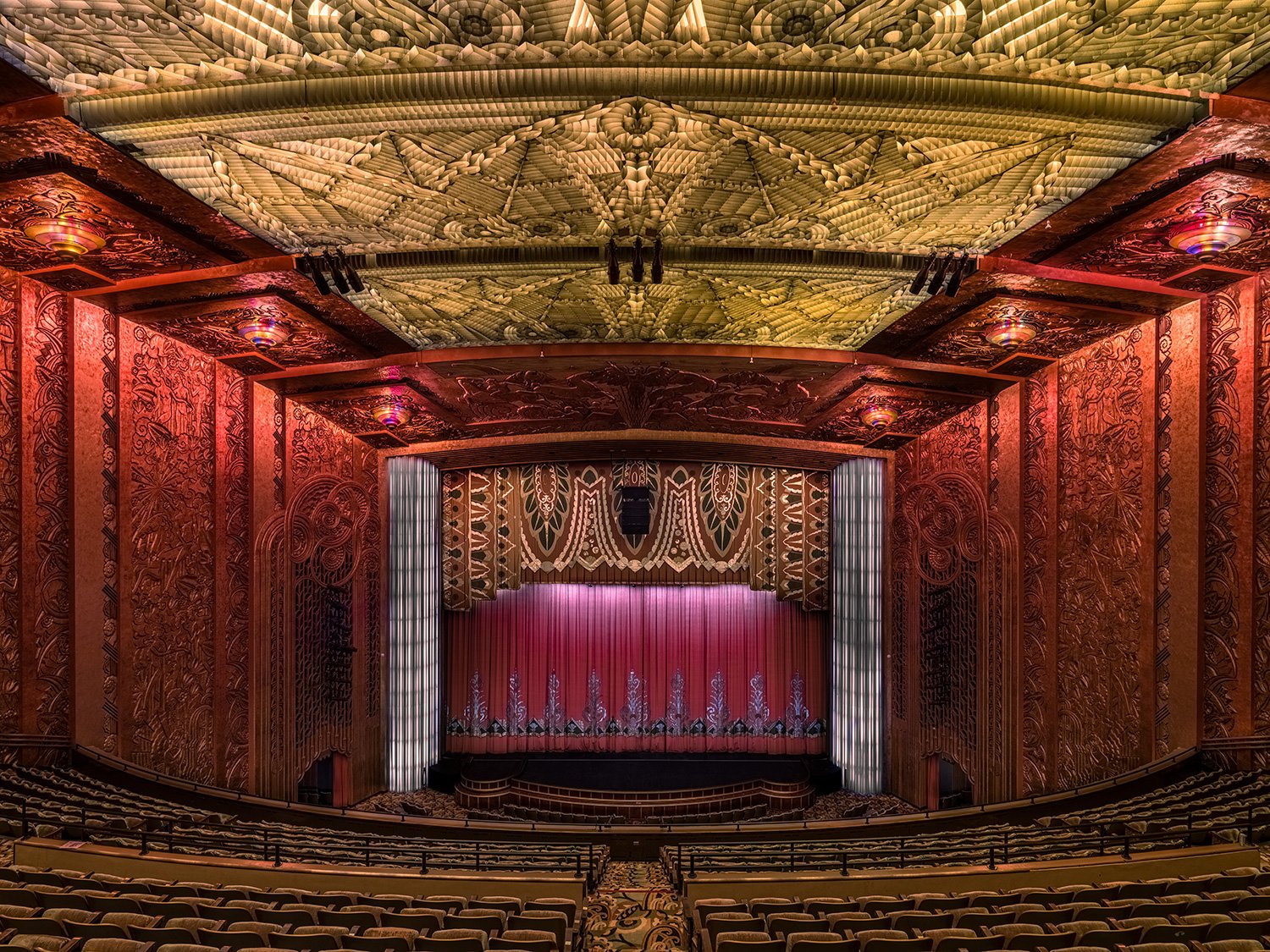




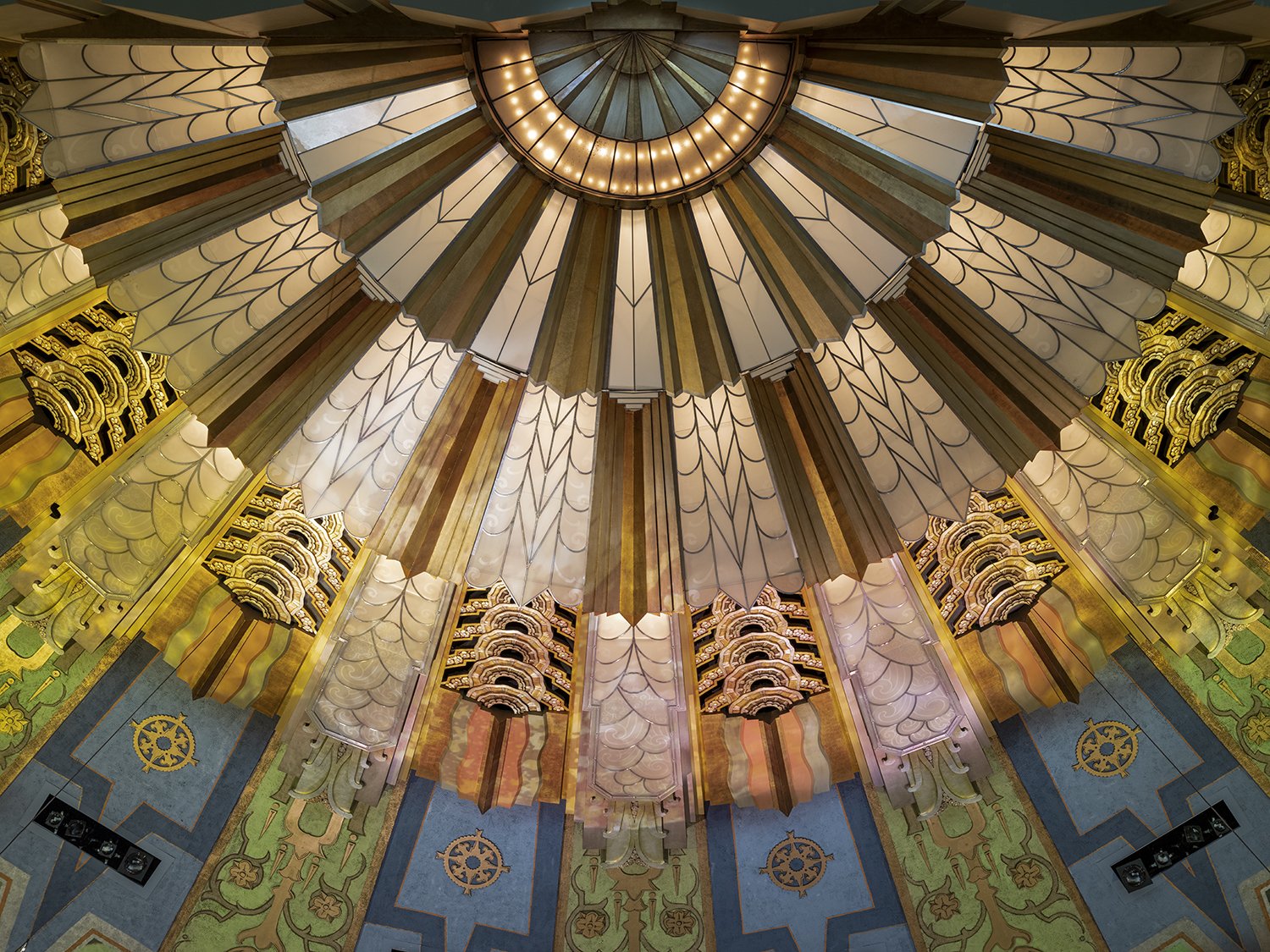

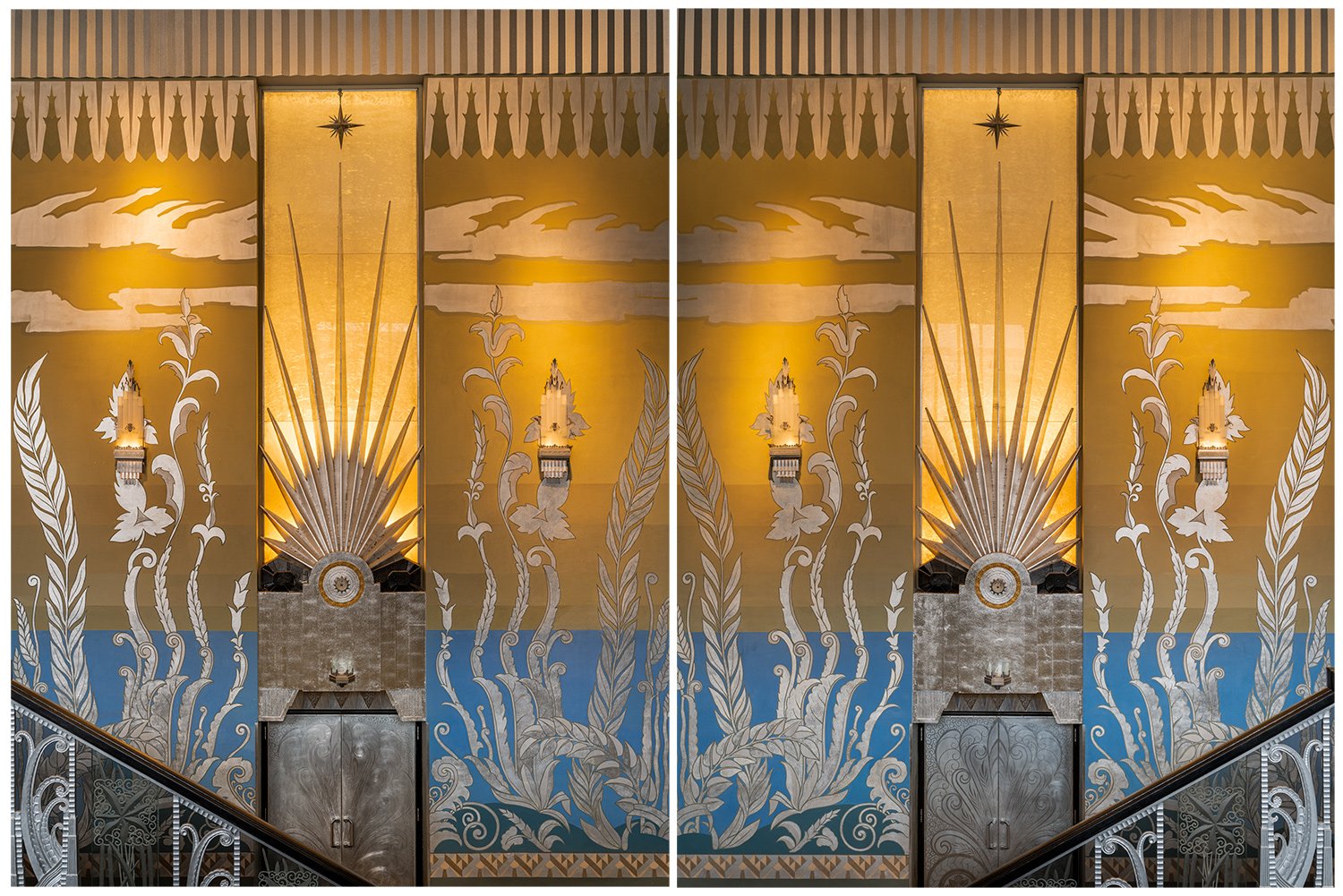




Post WWII saw the gradual coup de grâce of the picture-palace golden era; suburban exodus, urban renewal, financial hardship, anti-trust legislation, and television led to declines in attendance, and ultimately, to neglect and disrepair. Original survivors scattered throughout America were repurposed and restored into performing arts centers and concert venues. As custodians of a bygone era, if these iconic environments could speak I imagine a deluge of sensational stories. Their imposingly sublime beauty and flamboyance showcases a sociocultural allure of assembly, storytelling, and opulence. The advent of moving pictures as broadly accessible entertainment subverted class distinctions conventionally upheld in classical theatre. George Rapp of early 20th-century architectural firm Rapp & Rapp stated: “Here is a shrine to democracy where the wealthy rub elbows with the poor.” A century later, as citizens embrace ever-shifting connections in consumerist cultures, I am intrigued by these distinguished social nexuses and my aim is to preserve their historic relevance and rich memories.















